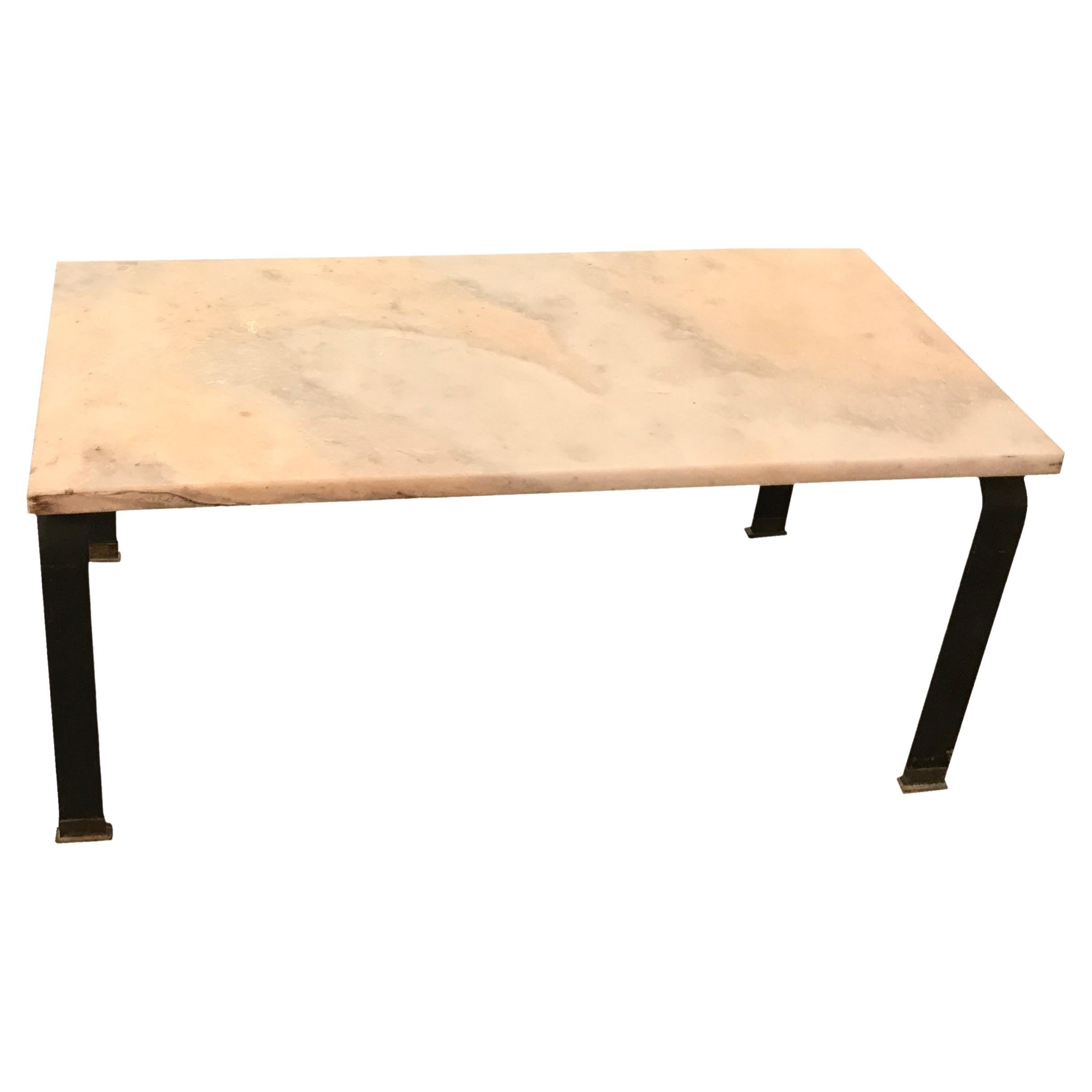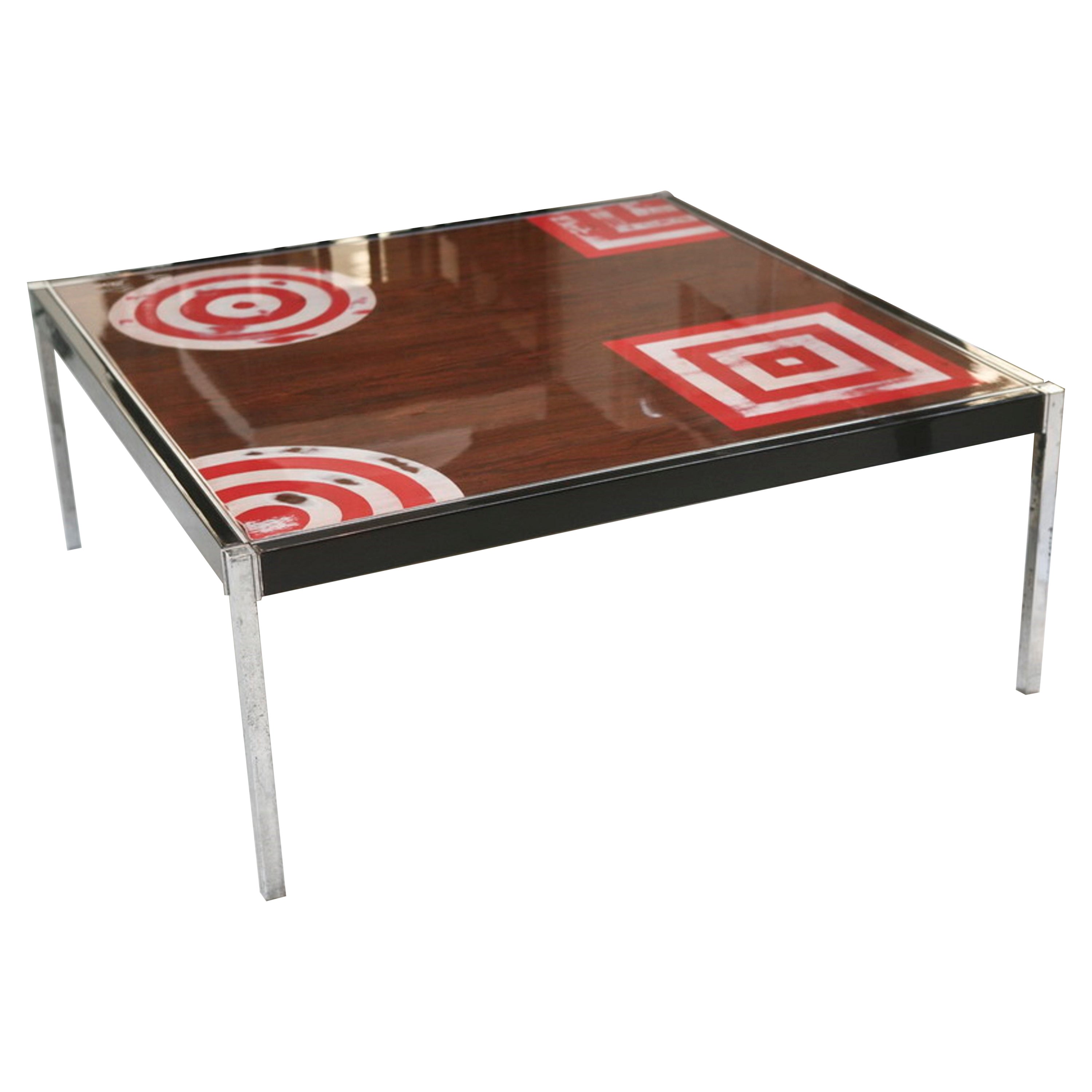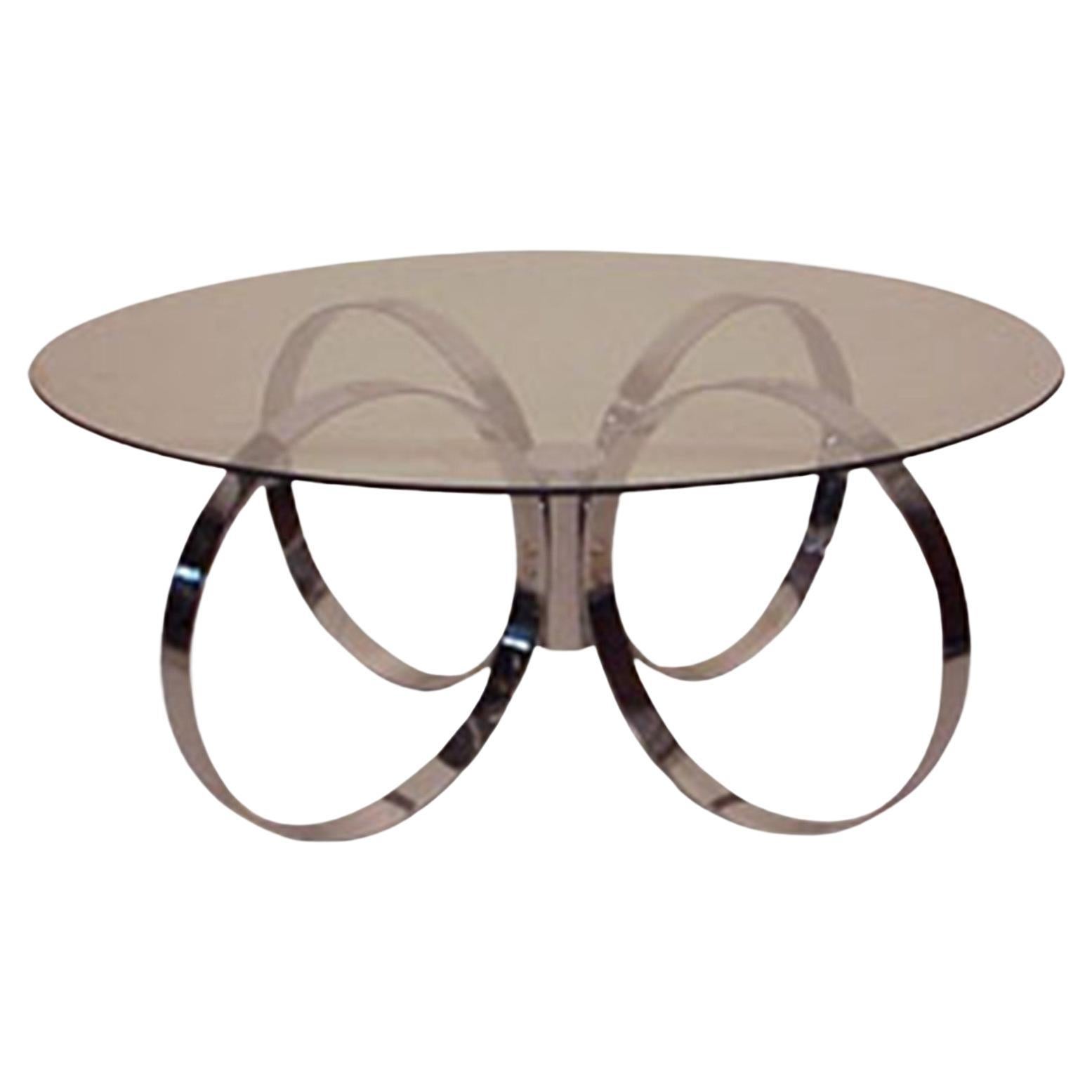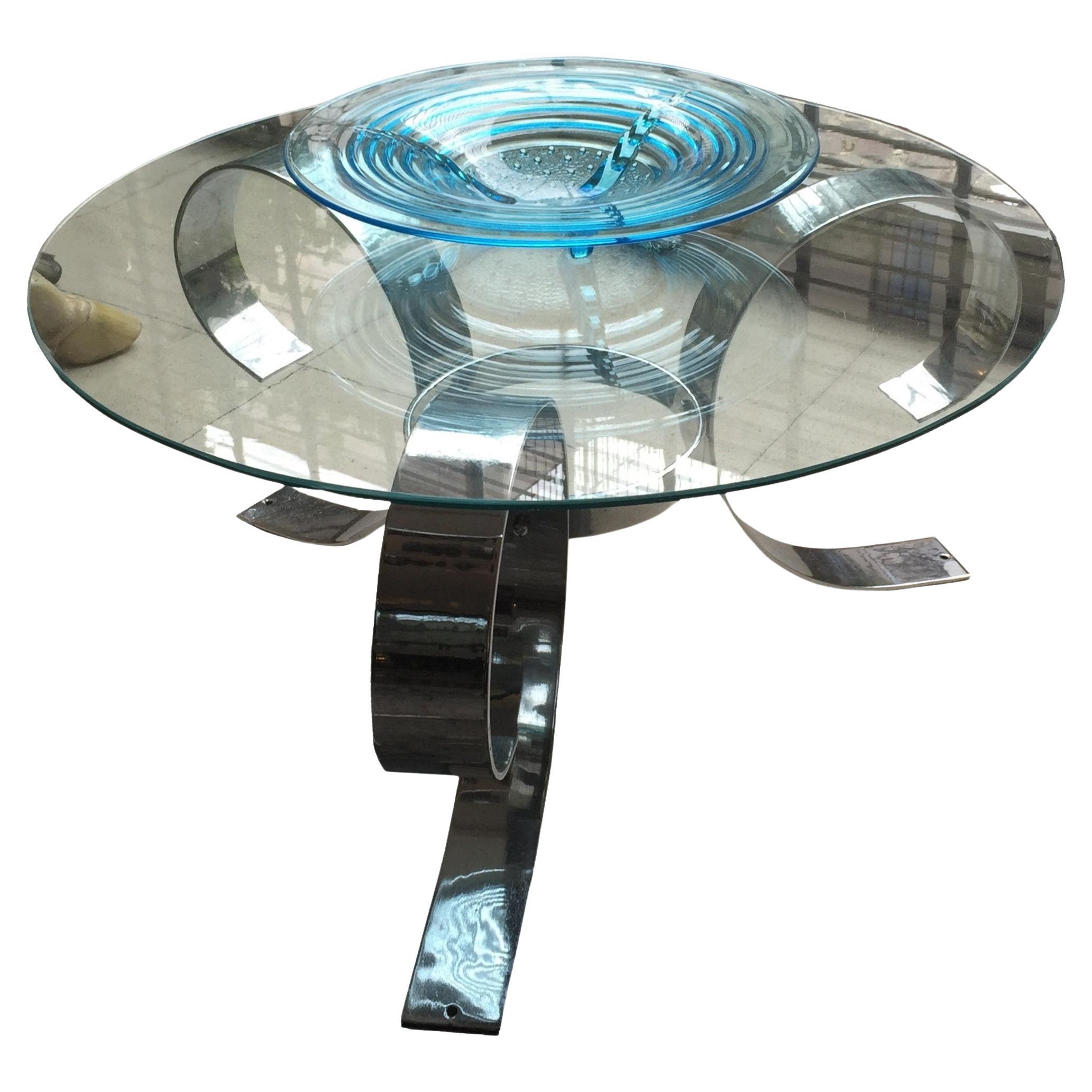Items Similar to Coffe table Art Deco , 1930 in bronze and chrome
Video Loading
Want more images or videos?
Request additional images or videos from the seller
1 of 7
Coffe table Art Deco , 1930 in bronze and chrome
About the Item
Coffe table
Material: bronze and chrome
Italian
We have specialized in the sale of Art Deco and Art Nouveau and Vintage styles since 1982. If you have any questions we are at your disposal.
Pushing the button that reads 'View All From Seller'. And you can see more objects to the style for sale.
Why are there so many antiques in Argentina?
In the 1880 – 1940 there was a grate wave of immigration encouraged by the periods of war that were taking place.
1st World War took place between 1914 and 1918
2nd World War took place between 1939 and 1945
The immigrants options were New York or Buenos Aires. Tickets were cheap and in Buenos Aires they were welcomed with open arms, as it was a country where everything was still to be done.
Argentina was the country of new opportunities, labour was needed and religious freedom was assured, in many cases the of the family travel first until they were settled and then the rest of the family members join them.
In the immigrant museum “Ellis Island Immigrant Building” in New York you can se the promotional posters of the boats that would take them to a new life.
Between the years 1895 and 1896, Argentina had the highest DGP (gross domestic product) per capita in the world according to the Maddison Historical Statistics index, this situation arose due to the large amount of food being exported to European countries, which were at war.
The Argentinean ships left the port of Buenos Aires with food, but they returned with furniture, clothes and construction elements, (it´s common to see this the old buildings of the historic neighbourhood of San Telmo, the beams with the inscription “Made in England)”, as well as many markets that were built in Buenos Aires, such us the San Telmo Market, whose structure was brought by ship and afterwards assembled in 900 Defensa Street.
With the great influence of European immigrants living in the country, the children of the upper classes travelled to study in France, resulting in the inauguration of “La Maison Argentinienne”, on 27th of June 1928, in the international city of Paris, which hosted many Argentinians that were studying in Frace.
It´s the fourth house to be built after France, Canada and Belgium, being the first Spanish-speaking one. Still in place today (17 Bd Jourdan, 75014, Paris, France). Many of the children of these wealthy families who attended international art exhibitions, museums and art courses abroad, took a keen interest in the European style. This is why Buenos Aires was at the time referred as “The Paris of South America”.
Between the years 1890 and 1920 more than a hundred Palaces were built on Alvear Avenue the most exclusive avenue in Buenos Aires. Today some of these palaces have been transformed into museums, hotels and embassies.
In the year 1936, the Kavanagh building was inaugurated, it was the tallest reinforced concrete building in South America.
During 1994 the American Society of Civil Engineers distinguished it as an “international engineering milestone”, and it´s now considered a World Heritage of Modern Architecture.
At the time was common to hire foreign architects such as Le Corbusier, who visited Buenos Aires/Argentina in 1929 and in 1948 he drew up the blueprints for a house built in La Plata City (which was declared a World Heritage Site).
In 1947, the Hungarian architect Marcelo Breuer designed “Parador Ariston” in the seaside city of Mar del Plata. After an Argentinean student at Harvard University convinced him to come to Argentina. He worked on an urban development project in the Casa Amarilla, area of La Boca.
The Ukrainian architect, Vladimiro Acosta, arrives in Argentina in 1928 and worked as an architect until que moved to Brazil.
Antonio Bonet, a Spanish architect who worked with Le Corbusier in Paris, arrives in Argentina in 1937, where he carried out several architectural works and in 1938 designs the well-known BFK chair.
Andres Kálnay, of Hungarian origin, made around 120 architectural masterpieces, among which the former Munich brewery stands out, he even made the furniture’s design.
The German architect, Walter Gropius, director of the Bauhaus, lived in Argentina, where he wrote articles for “Sur” magazine and founded in Buenos Aires, an architectural firm with Franz Möller, who was also an architect, where he built two houses.
At the same time several famous designers decided to immigrate to Argentina, among them we can find the well-known French designer, Jean-Michel Frank, who arrived in the country in 1940 and also worked for the Rockefeller family.
Special pieces were made, which were sold exclusively in the country, such as the well-known German company “WMF”, who sold their products by catalogue, which were chosen by the ladies of high society in the list of wedding gifts, as well as the pieces designed by Christofle.
The Swiss sculptor Alberto Giacometti, made special pieces for Argentinean mansions.
In 1904 the first Jansen branch outside Paris was established in Buenos Aires, as the Argentinean clientele demanded a large amount of furniture, from the end of the 19th century to the mid-20th century.
In 1970, the brand Rigolleau Argentina made pieces authorised by Lalique.
The brands Maple and Thompson also set up shop in the country.
The French plastic artist, Marcel Duchamp moved to Argentina in 1918-1919.
Glass signed Gallé, Charder, Leverre, Schneider, Muller and other French firms. They were bought in flower shops and were given to ladies with beautiful floral arrangements.
Some furniture manufacturers travelled to international fairs and bough the patterns to produce the furniture in Argentina, such as the furniture firm Englander and Bonta, who bought the patterns ins Italy.
It is worth mentioning that in Argentina we have the largest community of Italians outside of Italy, as it is estimated that 70 percent of the inhabitants have at least one Italian descendant, followed by Spanish immigrants.
The most Important furniture stores in Argentina:
Comte is founded in 1934 (under the direct management of Jean Michel Frank in 1940).
Nordiska (Swedish company established in 1934).
Churba in 1960, a company that brought foreign designers to present their furniture in the country:
Denmark: (Arne Jacobsen, Finn Juhl, Bender Madsen, Ejner Larsen, Poul Kjaerholm, Hans Wegner)
Sweden: (Hans Agne Jakobsson, Gustavsberg)
United States: (Herman Miller)
Finland: (Lisa Johansson, Folke Arstrom, Tapio Wirkkala, Alvar Aalto, Timo Sarpaneva)
Swedish Factory: (Orrefors)
Italy: (Littala, Vico Magistretti, Emma Gismondi, Gae Aulenti, Angelo Mangiarotti, Elio Martinelli, Gianna Celada, Angelo Mangiarotti, Mario Bellini, Carlo Scarpa)
Finland: (Olivia Toikka)
Plata Lappas (Lappas Silver): a goldsmith shop founded in 1887 in Argentina by Alcibiades Lappas of Greek origin.
In 2019, in Argentina took place “the Art Deco world congress”, in which we participated as hosts invited by Geo Darder, founder of the Copperbridge – Foundation, in which prominent people from all over the world attended to learn about Art Deco in Argentina.
Argentina currently has more than 100 Art Deco buildings and another 90 Art Nouveau buildings throughout the city of Buenos Aires.
Argentina is a country that has not been involved in many wars, which is why it has been a refuge for works of art and antiques from different periods of time, unlike European countries. That is way many collectors, museums and antique dealers from all over the world visit it, you should not miss the opportunity to visit this great country.
Laura Guevara Kjuder, architect.
- Dimensions:Height: 16.15 in (41 cm)Width: 34.26 in (87 cm)Depth: 23.63 in (60 cm)
- Style:Art Deco (Of the Period)
- Materials and Techniques:
- Place of Origin:
- Period:
- Date of Manufacture:1930
- Condition:Wear consistent with age and use.
- Seller Location:Ciudad Autónoma Buenos Aires, AR
- Reference Number:
About the Seller
5.0
Vetted Seller
These experienced sellers undergo a comprehensive evaluation by our team of in-house experts.
Established in 1982
1stDibs seller since 2022
21 sales on 1stDibs
Typical response time: <1 hour
- ShippingRetrieving quote...Ships From: Ciudad Autónoma Buenos Aires, Argentina
- Return PolicyThis item cannot be returned.
More From This SellerView All
- Coffe Table Art Deco, 1930 in Marble and IronLocated in Ciudad Autónoma Buenos Aires, CCoffe table Material: marble and iron Italian. We have specialized in the sale of Art Deco and Art Nouveau styles since 1982.If you have any questions we are at your disposal. Pushi...Category
Vintage 1930s Italian Art Deco Coffee and Cocktail Tables
MaterialsMarble, Iron
- Coffe Table Art Deco in Wood, French 1930 "Free Shipping in Florida"Located in Ciudad Autónoma Buenos Aires, C"Free shipping in florida" It was exhibited at Palm beach "American International Fine Art Fair (AIFAF)" Coffe Table Art deco It is an elegant and sophisticated Coffe table. You wan...Category
Vintage 1930s French Art Deco Coffee and Cocktail Tables
MaterialsWood
- Coffe Table in wood and chromed bronze, 60°, Country FranceLocated in Ciudad Autónoma Buenos Aires, CCoffe table in wood and chromed bronze. Year: 1960 Country: France It is an elegant and sophisticated coffe table. You want to live in the golden years, this is the dining table tha...Category
Vintage 1960s French Space Age Coffee and Cocktail Tables
MaterialsChrome
- Coffee Table Art Deco, 1930, Materials: Chrome and GlassLocated in Ciudad Autónoma Buenos Aires, CCoffe table Material: Chrome and glass Style: Art Deco German. We have specialized in the sale of Art Deco and Art Nouveau styles since 1982.If you have any questions we are at your...Category
Vintage 1930s German Art Deco Coffee and Cocktail Tables
MaterialsChrome
- Art Deco Coffee Table, 1930, Materials: Chrome and GlassLocated in Ciudad Autónoma Buenos Aires, CCoffe table Material: Chrome and glass Style: Art Deco German. We have specialized in the sale of Art Deco and Art Nouveau styles since 1982.If you have any questions we are at your...Category
Vintage 1930s German Art Deco Coffee and Cocktail Tables
MaterialsChrome
- Coffee Table Art Deco, 1930, Materials: chrome and glass, GermanLocated in Ciudad Autónoma Buenos Aires, CCoffe table Material: Chrome and glass Style: Art Deco German We have specialized in the sale of Art Deco and Art Nouveau and Vintage styles since 1982. If you have any questions we...Category
Vintage 1930s German Art Deco Coffee and Cocktail Tables
MaterialsChrome
You May Also Like
- Squared Coffe Table in Blown Murano Glass clear color and chromed finishes ItalyLocated in Villaverla, ITExquisite Squared Coffe Table in Blown Murano Glass clear color and chromed finishes Italy, by Giovanni Dalla Fina. This is an exclusive coffe table entirely hand crafted in blown Mu...Category
21st Century and Contemporary Italian Mid-Century Modern Coffee and Cock...
MaterialsChrome
- Contemporary crafted Table, Coffe table, SideTable and cocktail table in walnutBy Cara e DavideLocated in Meolo, VeneziaCarabottino is a collection made of a clever play of textures and transparencies, that makes these objects the centerpiece of any environment. A storage unit, a mirror or a table that establishes a dialogue between inside and outside.A wooden grating in a two-dimensional form traditionally made with wooden slats, Carabottino is considered to be an accessory element of relative importance, similar to window and door...Category
2010s Italian Modern Coffee and Cocktail Tables
MaterialsWood, Walnut
- Graphic Art Deco Coffee Table, France 1930s - 1940sLocated in Isle Sur La Sorgue, VaucluseElegant Art Deco-period wrought iron coffee table with a marble top. Bold lines, with contrasting graphic zig-zags and elegant loops and scrolls. The marble top is pink and yel...Category
Mid-20th Century French Art Deco Coffee and Cocktail Tables
- Italian Art Deco Rectangular Briar, Glass and Mirrored Side Sofa Table, 1930sLocated in MIlano, ITItalian Art Deco rectangular briar, glass and mirrored side sofa table, 1930s. Art Deco rectangular table with structure covered in briar and with mirrored parts...Category
Vintage 1930s Italian Art Deco Sofa Tables
MaterialsGlass, Mirror, Wood
- Large Rectangular French Art Deco Coffeetable, Sofa Table. 1930s.Located in Köln, NWMassive large rectangular French Art Deco coffeetable, sofa table by Souyeux, Ebenist from Nay, South of France. Makassar veneer. Black lacquer. New spear glass. Professionally res...Category
Vintage 1930s French Art Deco Coffee and Cocktail Tables
MaterialsGlass, Wood
- 1930s Round Coffee Center Table Art Decò by Gio Ponti in Ebonized WalnutBy Meroni & Fossati, Gio PontiLocated in Vigonza, PaduaMeroni & Fossati - Lissone - Italian 1930s round midcentury coffee center table, Art Decò, by Gio Ponti for Meroni e Fossati in ebonized walnut, with top in walnut slab. Wax polished. About Merobi & Fossati, Lissone A. Meroni & R. Fossati - founded in 1870, it was one of the oldest and most important furniture factories in Lissone, a small town in Brianza specialized in the furniture industry. In 1895 Meroni & Fossati reached an international connotation by opening a branch in Paris, a factory in Clamart and sales points in Rome, Milan, Varese, Paris and Vienna; warehouses in Constantinople, Amsterdam, Brussels, Zurich, London, Alexandria and in various cities of Italy. The most important Italian designers, including Gio Ponti and Emilio Lancia, Guglielmo Urlich, have used Meroni & Fossati for the production of furniture, bringing considerable fame to this industry Gio Ponti Born in Milan in 1891, Giovanni (Gio) Ponti studied architecture at Politecnico. After serving in World War I, he worked as Art Director for respected ceramics company Richard-Ginori. Between 1923 and 1927, he partnered with architects Mino Fiocchi and Emilio Lancia. In 1928, Ponti launched both his own architectural studio and the famed magazine Domus. Through the pages of Domus—and, later, those of Lo Stile, which he founded and edited between 1941 and 1947—Ponti influenced international design taste for over 50 years. Around 1933, he teamed up with engineers Antonio Fornaroli and Eugenio Soncini...Category
Vintage 1930s Italian Art Deco Coffee and Cocktail Tables
MaterialsWalnut
Recently Viewed
View AllMore Ways To Browse
Sweden 1930 Table
Table And Chairs Chrome Mid Century
1939 Worlds Fair Poster
1939 New York Worlds Fair Poster
Art Deco Table New York
Chrome Table And Chair Sets
Art Deco Flower Table
Art Deco Vintage End Table
Art Deco Ships Table
Designer Bronze And Glass Table
1940s Style Coffee Table
Vintage Deco Travel Set
Modern Chair Coffee Table Set
Spanish Bronze Table
Bronze Large Coffee Table
1930coffee Table
Coffee Shop Table
Bronze Branch Table





